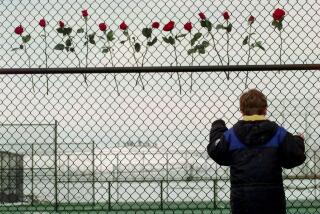Gun safety, Texas-style
When a 19-year-old sophomore named Colton Tooley opened fire with an assault rifle last fall near the UT Tower at the University of Texas, it seemed to some like a horrible rerun: In 1966, the tower was the site of what was then the worst campus shooting in U.S. history, when a sniper firing from the top of the structure killed 14 people. In some states, this kind of history might lead to government action to protect students from gun violence. But not in Texas.
Campuses are currently weapons-free zones in Texas. But the famously gun-friendly state, where many lawmakers carry concealed firearms inside the Capitol building, seems poised to pass a bill to let college students and professors do the same. The bill from Republican state Sen. Jeff Wentworth, which would allow the carrying of concealed weapons on college campuses by those with permits to do so, was passed by the Senate in 2009 but languished in the House. It has a far better chance this time around because more than half the members of the House have signed on as coauthors of a version of the bill.
It isn’t very hard to get a concealed-weapons permit in Texas; anyone over 21 who passes a computerized background check and completes a 10-hour course is eligible. Wentworth thinks his bill would actually make college students and faculty safer, because armed students could return fire in the event a crazed gunman started shooting at them. Gun enthusiasts in Texas and other states believe that if students at Virginia Tech had been armed in 2007, they could have stopped Seung-hui Cho’s rampage before it ended in the loss of 33 lives. They may even be right, but they’re ignoring the other risks posed by gun proliferation.
A student firing back at a gunman in a crowded classroom might pose as much of a risk to his fellow students as the assailant. Police don’t like liberal gun-carry laws because they endanger officers and create confusion: When a lot of people are waving guns around at a crime scene, it’s impossible to tell the good guys from the bad guys. College students, many of whom are coming to terms with the pressures of romantic entanglements and academic expectations, also tend to abuse alcohol and drugs. Adding firearms to this volatile mix is a spectacularly bad idea; guns are indeed tools of self-defense, but they’re also tools of suicide, accidental shootings, intimidation and murder.
Tooley’s only victim was himself. Armed students wouldn’t have produced a happier outcome, nor would they have been likely to stop 1966 sniper Charles Whitman. But they could do a lot of damage to themselves and their peers.
More to Read
A cure for the common opinion
Get thought-provoking perspectives with our weekly newsletter.
You may occasionally receive promotional content from the Los Angeles Times.






